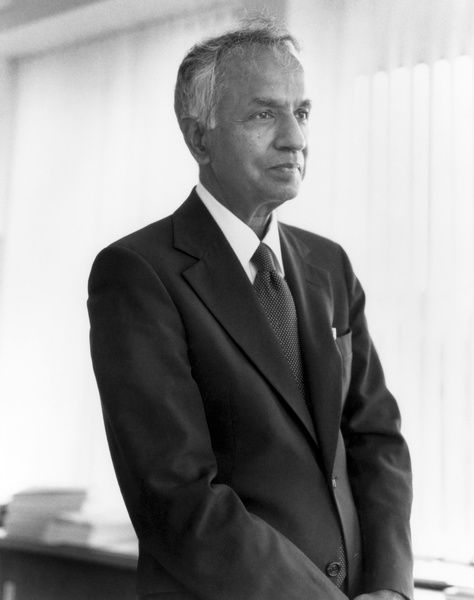Chandrasekhar, Subrahmanyan << `shahn` druh SAY kahr, `su` brah MAN yuhn >> (1910-1995), an American astrophysicist, shared the 1983 Nobel Prize in physics with William A. Fowler for research on the evolution and death of stars. Chandrasekhar is best known for his work on white dwarf stars—the compact final state in the evolution of certain stars.

Chandrasekhar discovered that white dwarfs with a mass 1.4 times greater than the mass of our sun collapse as a result of their own gravitation. Eventually, they become neutron stars—stars with the density of an atomic nucleus—or collapse even further to become black holes. A black hole is so dense that not even light can escape from its powerful gravitation. The maximum mass a white dwarf star can have before it begins to collapse is known as the Chandrasekhar limit.
Chandrasekhar was born on Oct. 19, 1910, in Lahore in what is now Pakistan. He graduated from Presidency College in Madras (now Chennai), India, in 1930. In 1933, he received his doctorate in physics from the University of Cambridge in England. He remained at Cambridge as a fellow until 1937, when he joined the faculty of the University of Chicago. In 1953, he became a United States citizen. Chandrasekhar died on Aug. 21, 1995.
